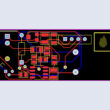Version control has been used in the software and hardware industry to make workflows effective and allow engineers to work on projects simultaneously without hindering each other’s productivity. However, companies can explore its potential much further.
This is because version control can also be quite useful for multi-stakeholder collaboration. These days, no product is purely the ambit of engineers or designers. Now, there are a number of stakeholders involved in the feedback and production process. They include engineers, supervisors, suppliers, manufacturers, distributors, and clients. To complicate things even further, many of these stakeholders are located continents away from each other. For example, the engineering team may be in San Francisco, while major suppliers are all the way in China or South Korea. In addition, the COVID-19 pandemic has made remote work the norm rather than the exception. Therefore, any changes or updates in product designs can become immensely problematic if companies do not handle them effectively.
To do this, the higher-ups must integrate intuitive collaborative tools with embedded version control systems. They play a key role in smooth, hassle-free multi-stakeholder collaboration in the hardware industry.
How does version control make multi-stakeholder collaboration easier?
It is a common misconception that version control is only useful for engineers and other technical team members. This leads to its many benefits for all other stakeholders being ignored. These benefits include:
- Clarity
With the visual diffing features which are part and parcel of version control systems, product designs are much clearer for all stakeholders. They can see exactly what the product is and understand it better. This is especially useful when engineers report to executives who do not have the technical knowledge to understand source codes.
- Easier feedback
As designs are clearer for all stakeholders, it is also easier to give feedback and respond to it. As new branches are created due to version control, others can give highly specific feedback and suggest any changes without disrupting the whole design process. When combined with Annotation features, version control is excellent for real-time feedback, saving aa considerable amount of time. Otherwise, stakeholders would have to rely on phone calls, screenshots, and emails, all of which have their pitfalls.
- Faster approvals
As version control allows all stakeholders to view projects as changes are made, approvals can be given swiftly. Whether it is a supervising engineer or a client, they can check out the design updates, and communicate their concerns or approvals immediately.
- Faster response mechanisms
Due to all the abovementioned factors, updating existing designs or pushing new ones becomes an efficient process. Engineers, suppliers, manufacturers, and clients can respond in real-time, leading to a streamlined workflow and maximized productivity. They don’t have to rely on conventional communication methods which take up a lot of time, better utilized in actual productive tasks such as creating new designs or improving existing ones.
Therefore, version control is a highly useful tool for all industries, but specifically for the hardware sector. Its benefits extend across all stakeholders, making it a must-have for a streamlined and effective workflow.








